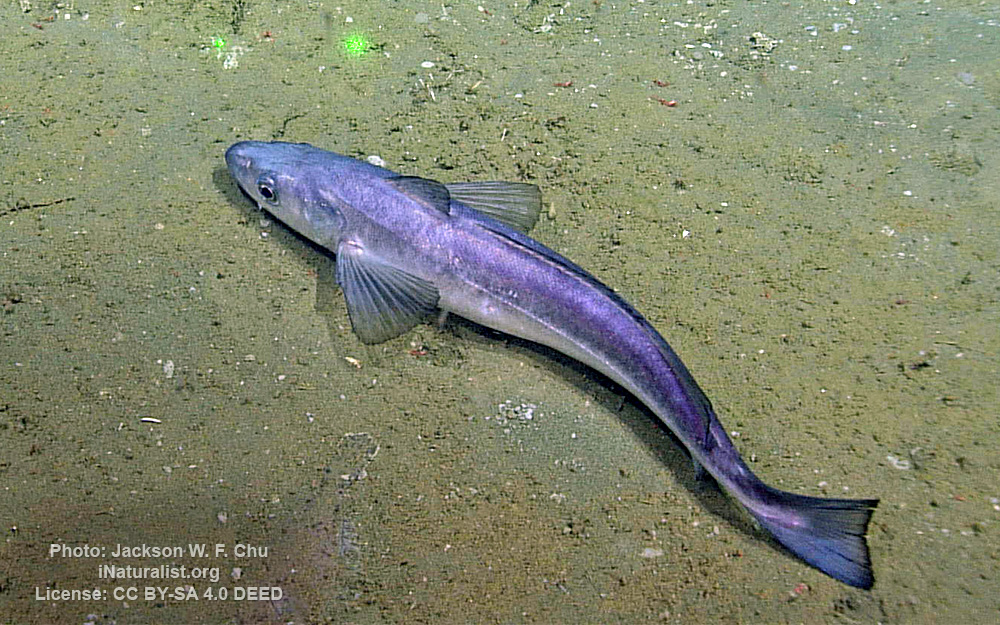Sablefish
(Anoplopoma fimbria)

Image source: Jackson W. F. Chu | inaturalist.org
Classification
General data
The sablefish (Anoplopoma fimbria) is one of two members of the fish family Anoplopomatidae and the only species in the genus Anoplopoma.
In English, common names for it include sable (US), butterfish (US), black cod (US, UK, Canada), blue cod (UK), bluefish (UK), candlefish (UK), coal cod (UK), snowfish, coalfish (Canada), beshow, and skil (Canada), although many of these names also refer to other, unrelated, species.
The sablefish is found in muddy sea beds in the North Pacific Ocean at depths of 300 to 2,700 m (980 to 8,860 ft) and is commercially important to Japan.
The sablefish is a species of deep-sea fish common to the North Pacific Ocean. Adult sablefish are opportunistic piscivores, preying on Alaskan pollock, eulachon, capelin, herring, sandlance, and Pacific cod, as well as squid, euphausiids, and jellyfish.
Sablefish are long-lived, with a maximum recorded age of 94 years although the majority of the commercial catch in many areas is less than 20 years old.
Sablefish growth varies regionally, with largest maximum sizes in Alaska, where total lengths up to 114 cm (45 in) weights up to 25 kg (55 lb) have been recorded. However, average lengths are typically below 70 cm (28 in) and 4 kg (8.8 lb).
Tagging studies have indicated that sablefish have been observed to move as much as 2,000 km (1,200 mi) before recapture with one study estimating an average distance between release and recapture of 602 km (374 mi), with an average annual movement of 191 km (119 mi).












